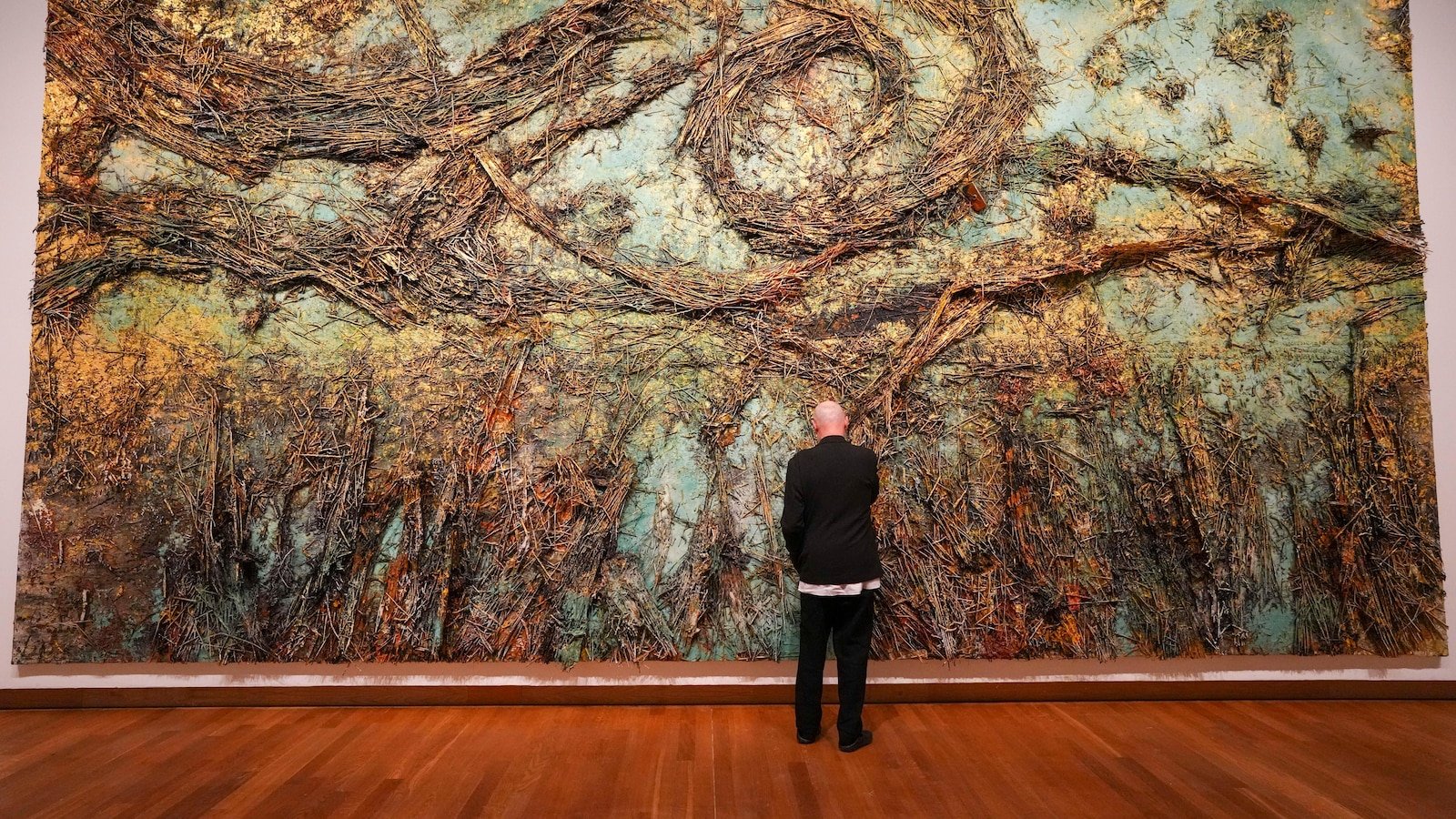Amsterdam – When he was only 17 years old, German artist Anselm Kiefer returned on the steps of Vincent Van Gogh from the Netherlands through Belgium and in France.
Now, more than half a century later, the museum called by the Dutch teacher is joining forces for the first time with the neighboring Museum of Modern and Contemporary Art of Stedelijk in Amsterdam to organize a successful exhibition of Kiefer’s work, entitled “Sag Mir Wo Die Die Blume Sind”, a reference to the Cinger Folk Pete Seger Gone all the flowers that have gone? ” “
Kiefer said it was not proposed to make an exhibition exclusively against war, although the world events closely follow, including the conflict caused by the invasion of Ukraine of Russia.
“I do not say ‘now I do an exhibition against war’. I do not do this because this is a program; I am not a programmatic artist,” he said. “I do what is in me, what has to leave. And that is about all kinds of things, about the dead, about the war.”
Kiefer’s shady work, rooted in growing in Germans after World War II, might not feel immediately related to the landscapes and vases of Van Gogh de Van Gogh.
But I look at Kiefer’s “The Crows” in 2019, along with the “Wheatfield with Cuervos” from Van Gogh, and the inspiration for the work of the German jumps from the wall.
The melancholic black birds are not the only shared themes representing the two artists.
One of Van Gogh’s most famous inspirations, the sunflowers, also appear in Kiefer’s works.
A huge dry sunflower hangs face down in a glass cabinet, throwing its seeds in a book made of lead leaves, while “Sol Invictus” shows a sunflower that rises on the artist, which is in a yoga position known as the body’s pose.
The show also includes some of his sketches of his trip on the steps of Van Gogh.
The 79 -year -old German artist has a long relationship not only with Van Gogh, but also with collectors Stedelijk and Dutch who bought some of his first works. The Stedelijk shows early pieces, such as a sculpture of an airplane that resembles a B-1 bomber that is made of lead and called “trip at the end of the night.”
The central piece of the Stedelijk is the installation for which the show is named. Built around the museum’s central staircase, it has clothes dotted with paint on hangers and flower petals spilling paintings and batteries on the floor, among many things.
Kiefer said he wrote one of the lines in the Seger song, which was also sung in German by Marlene Dietrich, on the wall as part of the installation: “Who will learn?”
“This prayer makes the song philosophical,” he told reporters. “You know, because we cannot understand. We cannot understand, for example, that things happened today in (19) 33 in the world.”
When asked about the emergence of the far -right alternative for the Germany party that increased in last month German electionHe said: “It’s horrible.”
The huge central work consists of a long list of components that include emulsion, oil, acrylic, lacquer rubber, golf leaf, electrolysis sediment, dry flowers, straw, cloth and steel.
The straw appears in many of Kiefer’s paintings, giving them a complex surface that sometimes echoes the bold brushstrokes of Van Gogh.
“He is working as a kind of … alchemist transforming material into an art,” said curator Edwin Bakker, from Van Gogh Museum, to The Associated Press.
The exhibition opens on March 7 and extends until June 9 at the Van Gogh Museum and the Stedelijk Museum.





